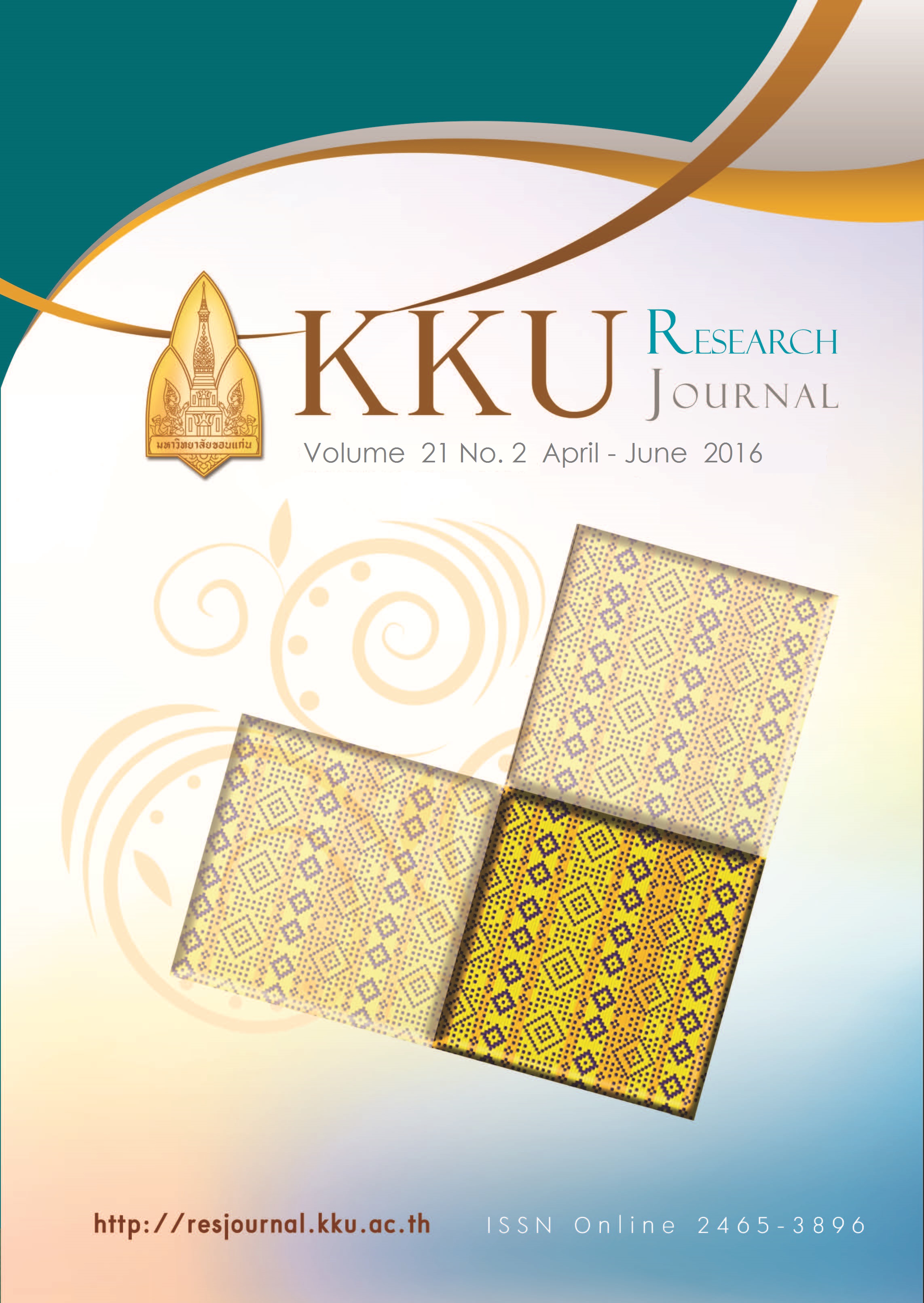Separation of polyphenol compounds and caffeine from green tea extract
Main Article Content
Abstract
The polyphenolic compounds in green tea extract i.e. tannins and polyphenols, especially catechins, attribute to organoleptic and heath promoting functions. For tea caffeine, although it is known to stimulate nervous system; however, overuse of caffeine may induce a number of detrimental effects including headaches and migraines. Therefore, this research is aimed at optimizing the separation of caffeine and the major tea polyphenols namely catechins from green tea extract using adsorption/desorption technique. In this study, Assam green tea extract was prepared by boiling 5%w/v tea leaves in 100 mL of acidified deionized water at 95°C for 10 mins. The pH of the tea-hot water mixture in the extractor was controlled at pH 4 using citric acid. This was done to minimize oxidative degradation of active ingredients. Total polyphenol content (TPC) of the fresh extract measured using a spectrophotometer was 8.8%w/v. Thereafter, the extract was evaporated until the final volume was 10 mL. Subsequently, the concentrate was separately flown in different resin columns i.e. polyamide 6, amberlite XAD-7, nylon 6/6 and polyamine at a constant flow rate of 2.7 mL/min. Water-ethanol mixtures (0 to 95%v/v of ethanol) were used as eluting agents in desorption process. It was found that, caffeine and catechins were clearly isolated from each other when the polyamide column was initially desorbed with water (to elute caffeine) followed by 50%v/v ethanol in water (to elute catechins). The recovery percentages of the isolation process for caffeine and individual catechins were 36.4% and in the rage of 28.5 to 98.7%, respectively. Therefore, the purified caffeine
and catechins could be further used as ingredients in food, beverage and pharmaceutical industries.
Article Details
References
[2] Karakaya S, El SN, Taş AA. Antioxidant activity of some foods containing phenolic compounds. Int J Food Sci Nutr. 2001 Nov;52(6):501-508.
[3] Min G, Xiaolei W, Ming G, Zhiguo S, Ye W, Jan-Christer J. Separation of polyphenols using porous polyamide resin and assessment of mechanism of retention. J Sep Sci. 2011 Jun 28; 34(15):1853-1858.
[4] Senji S, Yumi T, Yuki O. Preparation and antioxidant properties of extracts of Japanese p e r s i m m o n l e a f t e a (kakinoha-cha). Food Chem. 2005 March;89(4):569-575.
[5] Singleton VL, Orthofer R, Lamuela-Raventos RM. Analysis of total phenols and other oxidation substrates and antioxidants by means of Folin-Ciocalteau reagent. Method Enzymol. 1999;299: 152-178.
[6] Lihu Y, Xu L, Yueming J, Nola C, Bruce D, Riantong S, Nivedita D, Ying X. Compositional analysis of teas from Australian supermarkets. Food Chem. 2006 January;94(1): 115-122.
[7] Tetsuhisa G, Yuko Y, Masaaki K, Hitoshi N. Simultaneous analysis of individual catechins and caffeine in green tea. J Chromatogr A 1996 October 18;749(1-2):295-299.


